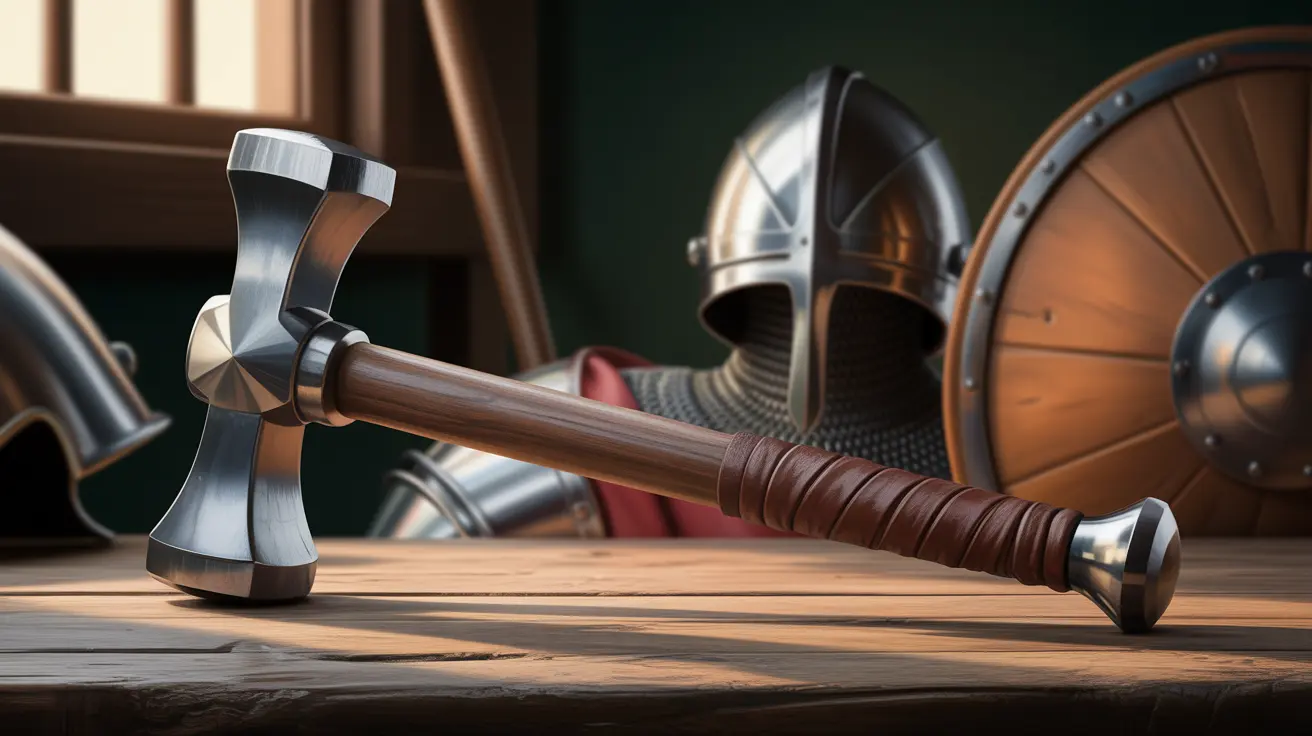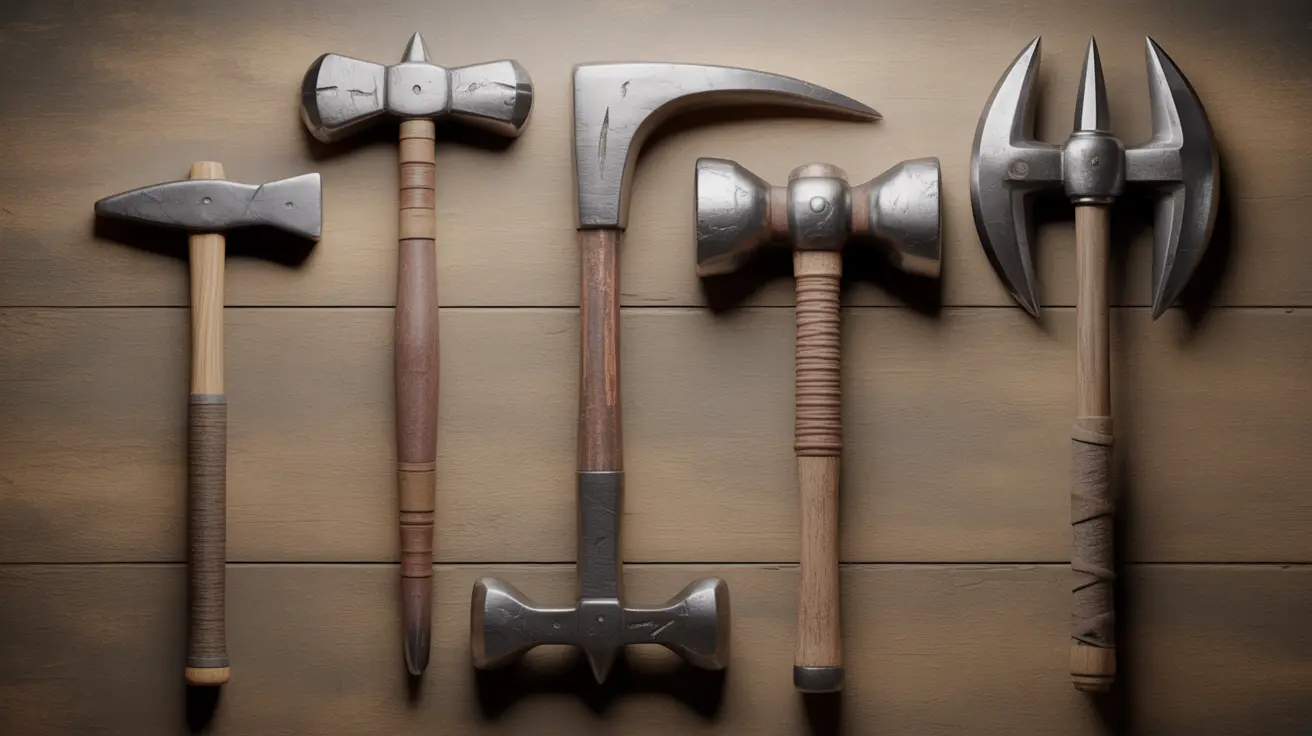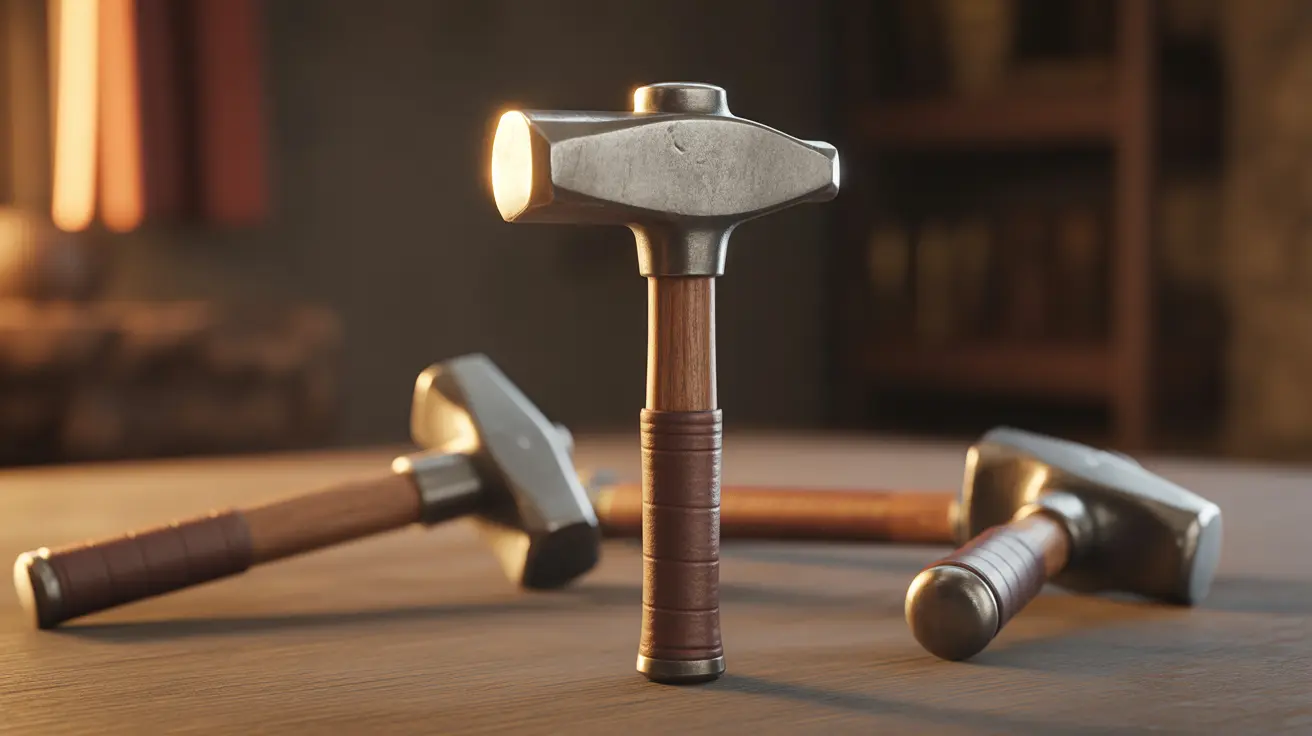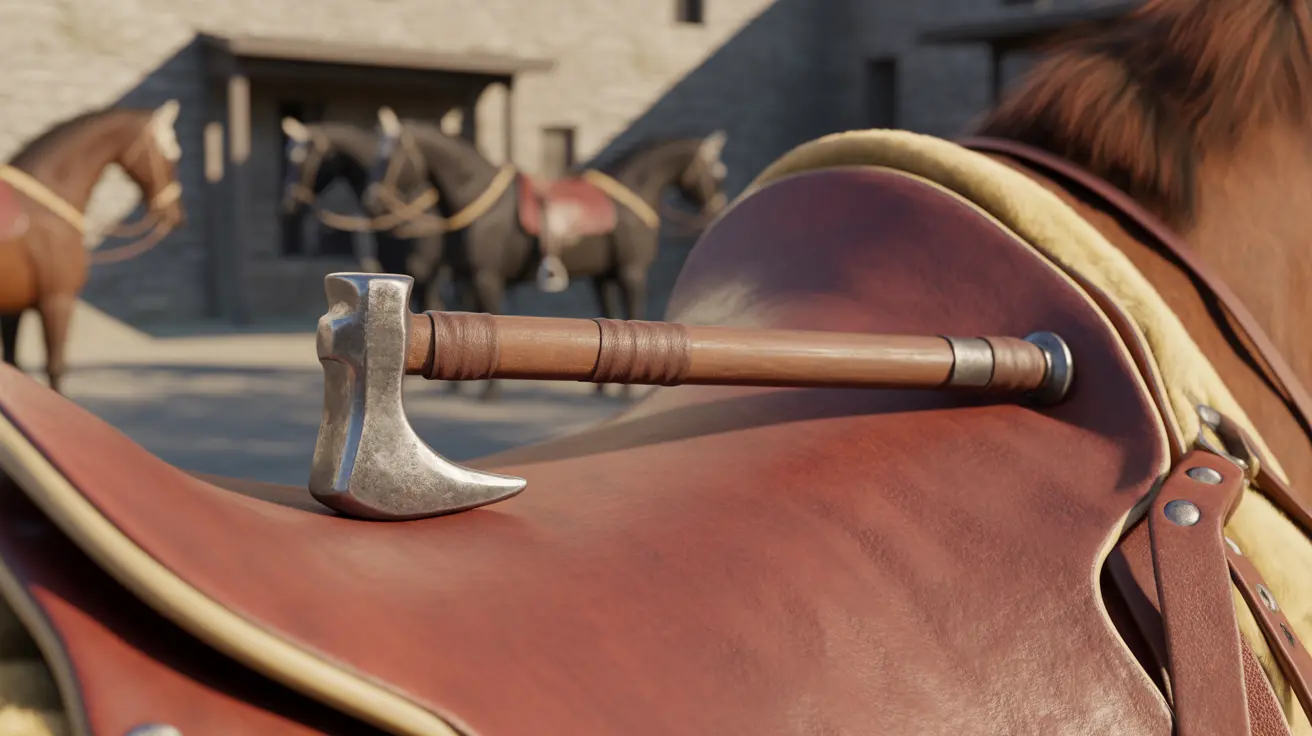Blog
What is Warhammer? Ultimate Guide

A war hammer was a powerful and practical weapon used during the Middle Ages. It was created to fight knights who wore heavy metal armor that swords and arrows could no longer pierce. The war hammer had two main parts: a flat hammerhead on one side, used for crushing armor, and a sharp spike on the other side, for piercing through helmets or shields. This simple yet innovative design made it a favorite weapon for many soldiers. What made the war hammer unique among medieval weapons was its perfect mix of strength, control, and effectiveness. It was easy to handle, deadly in battle, and proved that power and skill could overcome even the strongest armor.
History of the War Hammer:
The war hammer is a weapon with a long history. In ancient times, it was used in battles to break armor and shields. Soldiers valued it for its simple design, usually a wooden handle with a metal head. During the medieval period, the warhammer became more advanced, with spikes or heavier heads to fight armored knights. It was widely used on the battlefield for close combat. Later, as fighting styles and weapons changed, the war hammer was used less in war. Instead, it became a ceremonial object, symbolizing power and authority in ceremonies, parades, and knightly events.
What are the Different Types of War Hammers?

War hammers were strong and versatile medieval weapons, made to crush or pierce armor and give soldiers an advantage in battle. They came in three main types: one-handed for quick strikes, two-handed for powerful blows, and horseman’s hammers for mounted attacks, each designed for specific fighting situations.
1. One-handed war hammers
One-handed war hammers were smaller and lighter weapons that allowed a soldier to hold a shield in the other hand. They were easy to carry, quick to swing, and very effective against lightly armored enemies. Their speed and convenience made them popular among foot soldiers in close combat.
2. Two-handed war hammers
Larger and heavier than one-handed versions, these required both hands to swing. They delivered mighty blows, able to dent or pierce heavy armor, but were slower and required strength and skill to use effectively.
3. Horseman’s hammer (or maul)
This type was designed for mounted soldiers. It had a long handle and heavy head, allowing riders to strike enemies from horseback with strong, crushing blows. It helped attack armored opponents during charges.
Key Parts of a War Hammer
A war hammer was made of several essential parts, each designed to make it effective in battle. Every part worked together to deliver powerful strikes, pierce armor, and give the soldier control and balance while fighting.
1. Hammerhead
The hammerhead was the flat, heavy part of the war hammer used to crush armor and deliver strong blows. Its weight enabled soldiers to break shields, dent helmets, or knock down enemies, making it a key factor in the weapon’s effectiveness in combat.
2. Spike
The spike was a pointed end opposite the hammerhead, used to pierce armor, helmets, or shields. It added precision to the war hammer, allowing soldiers to target weak spots in an opponent’s defense, making it deadly against well-protected enemies.
3. Shaft or handle
The shaft, or handle, was the part soldiers held to swing the war hammer. It needed to be strong and long enough for leverage, giving the user control, reach, and the power to deliver crushing or piercing strikes effectively.
4. Pommel
The pommel was a small weight or cap at the end of the handle. It balanced the war hammer, making it easier to control during swings, and sometimes could be used to strike enemies in close combat, adding extra versatility.
What is the Material Used in War Hammer?
War hammers were made from strong, durable materials to be effective in battle. The handle or shaft was usually made of wood, which was both sturdy and light, allowing the soldier to swing the hammer quickly and with control. The striking parts, including the hammerhead and spike, were made of steel or iron. These metals were hard enough to crush armor, dent helmets, and pierce shields, giving the war hammer its power. Sometimes, the metals were carefully shaped and reinforced to last longer in battle. Using a combination of wood for the handle and metal for the striking parts made war hammers both strong and easy to handle.
Comparison with Swords, Axes, and Maces:
The war hammer stood out among other medieval weapons like swords, axes, and maces. While swords were fast, axes were sharp, and maces were heavy, they combine crushing power and precision. It was specially designed to break through armour and defeat heavily protected enemies.
War Hammer Vs Swords
Swords are fast, sharp, and great for cutting and thrusting, making them ideal for quick, agile fighters. War hammers, on the other hand, rely on heavy, crushing blows that can smash through armour. While slower, a warhammer’s impact can deal devastating damage even against well-protected enemies.
War Hammer Vs Axes
Axes were suitable for chopping and could damage both enemies and shields, but war hammers were stronger at breaking armour. Their heavy heads and pointed spikes made them especially effective against fully armoured knights. War hammers focused more on smashing and piercing than on chopping.
War Hammer Vs Maces
Maces were blunt weapons that crushed armour, similar to war hammers, but lacked a piercing point. War hammers combined the power of a heavy strike with a sharp spike, making them more versatile and deadly against heavily armoured opponents.
How the War Hammer Was Used in Combat?
The warhammer was a powerful weapon used by soldiers and knights to defeat armoured enemies. In battle, it was swung with great force to crush helmets, shields, and armour. The flat hammerhead delivered heavy blows that could knock down or stun an opponent, while the sharp spike was used to pierce weak points in metal armour. Soldiers used war hammers in close combat, often aiming for the head or joints where armour was thinner. Some larger versions were used with both hands for stronger strikes, while smaller ones could be paired with a shield. The war hammer’s mix of power and control made it a deadly weapon on the medieval battlefield.
1. Against Armor: The True Purpose Behind Its Design
The war hammer was specially made to defeat heavy armour. While swords and arrows struggled to cause damage, the hammer’s weight and spike could crush metal plates and pierce helmets, giving soldiers a decisive advantage against well-protected enemies on the battlefield.
2. Striking Techniques: From Swing to Hook and Pull
Soldiers used different techniques with the war hammer. They swung it hard to crush armour or used the spike to pierce weak spots. The curved spike could also hook onto armour or shields, allowing fighters to pull opponents off balance during close combat.
3. Mounted Warfare: How Knights Used War Hammers on Horseback
Knights often wielded war hammers from horseback. The long handle and heavy head let them strike downward with immense power, crushing helmets and armour as they rode through enemy lines. In mounted battles, the war hammer gave knights reach, momentum, and devastating impact, making it one of the deadliest weapons on the field.
4. Fighting in Close Quarters: Training and Skill Required
Using a war hammer in close combat needed strength, timing, and precision. Soldiers trained to swing with control and hit weak spots in armour. Its innovative design and lasting impact on history are why people still talk about the war hammer today.
Who used war hammers the most?
Knights, soldiers, and footmen mainly used War hammers during the late Middle Ages. Knights liked them because they were powerful enough to crush the armor of other knights in battle. Foot soldiers also used smaller, one-handed versions since they were easier to carry and swing while holding a shield. Cavalry, or mounted fighters, often used longer war hammers to strike enemies from horseback. Blacksmiths and weapon makers designed them carefully to balance strength and control. Because of their ability to break armor and deliver deadly blows, war hammers became one of the most trusted and effective weapons in medieval warfare.
How Much War Hammers are in Modern Culture?
Today, war hammers are no longer used in battles but have become a popular part of modern culture. Over time, they evolved from powerful weapons on the battlefield to collectible items that represent history and strength. Many people admire them for their design and craftsmanship. War hammers often appear in movies, video games, and fantasy stories, where they are shown as symbols of power used by heroes or warriors, like Thor’s hammer in Marvel movies. Collectors and history fans now keep them as display pieces, while others use replicas in medieval reenactments or cosplay events. From ancient warfare to modern entertainment, the war hammer still captures people’s imagination and respect.
Why Collectors Love War Hammers?
Collectors love war hammers because they hold deep historical significance and show how weapons evolved during the medieval period. Each war hammer tells a story about ancient battles, brave knights, and the skill of blacksmiths who made them. Beyond their history, collectors also admire their artistic design and craftsmanship. Many war hammers feature beautifully shaped metal heads, detailed carvings, and well-crafted wooden handles. These designs show both strength and creativity, making them unique pieces of art. For many collectors, owning a war hammer is like holding a piece of history that represents power, courage, and the artistry of the medieval world.
Conclusion:
The war hammer remains one of the most powerful and admired weapons in history. Once a tool of war used to crush armour and defeat knights, it has now become a symbol of strength, skill, and bravery. Its clever design and deadly effectiveness show the creativity of medieval weapon makers. Today, the warhammer continues to capture the imagination of collectors and fans, appearing in movies, games, and museums around the world. From the battlefield to the display stand, its story represents enduring power and craftsmanship, a reminder of how history and art come together to keep the spirit of the Middle Ages alive.




